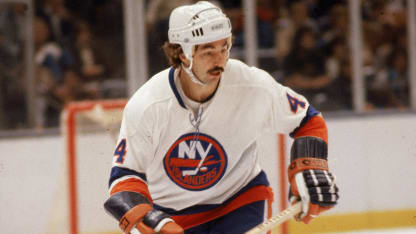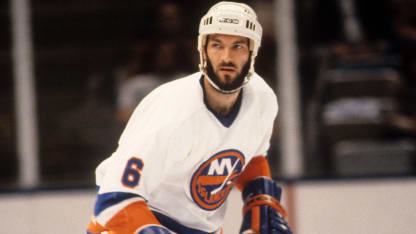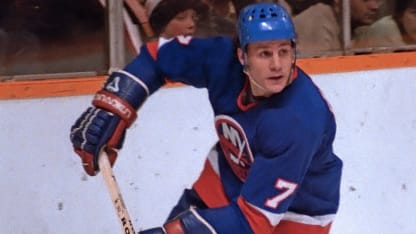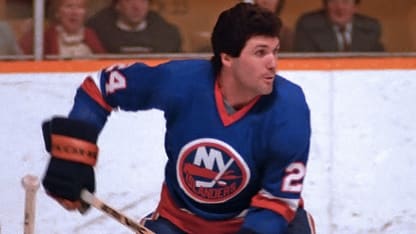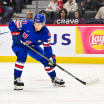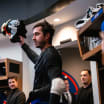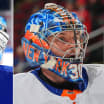KEN (WOLFMAN) MORROW:At first glance, Wolfman did not appear particularly threatening. The 6-4, 205-pounder often looked like a beanstalk on skates; rather than the U.S. Hockey Hall of Famer (1995) he turned out to be.
But that was all part of Ken's deception. He didn't look like a scorer but -- with the exception of Hall of Famer Denis Potvin -- no Islanders defenseman tallied more big goals than this native of Flint, Michigan.
Ironically, hardly anyone paid much attention to Morrow at Bowling Green University in Ohio during the mid-1970s; except Bowtie Bill who drafted him 68th in 1976, Eventually, Morrow was named CCHA First Team All-Star in 1976, '78 and '79 as well as CCHA Player of the Year in 1979; and an All-American.
Herb Brooks, Uncle Sam's 1980 Olympic coach, welcomed Morrow to his roster and Ken returned the favor as an integral part of the famed Miracle On Ice sextet.
Immediately after winning Gold at Lake Placid, Morrow made his Islanders debut and was impressive for his savvy and aplomb. "Wolfman was the textbook defenseman," said Mike Bossy, "plus he had an uncanny knack for scoring huge playoff goals."
MAVEN'S MEMORIES: MORROW'S PLAYOFF BEARD
The first -- and one of the biggest -- was delivered in Game Three of the first 1980 playoff round against Los Angeles. With the best-of-five series tied at one apiece and Game Three knotted 3-3, Ken scored the sudden-death winner to get his club on track for their first Cup run.
"My personal favorite was the playoff OT-winner I got against the Rangers," Ken smiled.
It happened at Nassau Coliseum, April 10, 1984. With the score tied 2-2, and almost nine minutes gone in the first sudden-death period, Arbour sent Ken over the boards as play moved into the enemy zone.
Morrow: "The Rangers tried to clear the puck along the boards on my right side. I got the puck and saw an opening. I didn't hesitate; I put the shot through traffic, right on goal. (Right wing) Patrick Flatley was screening (goalie) Glen Hanlon as it went in although I didn't see that.
"Later I was told it went between Hanlon's legs," Morrow added. "I didn't know the puck had gone in until I heard it clang off the bottom of the back of the net. That win gave us our 17th straight playoff series victory, and we went on to win an un-real 19th in a row. I'm proud that my goal kept us alive!"
